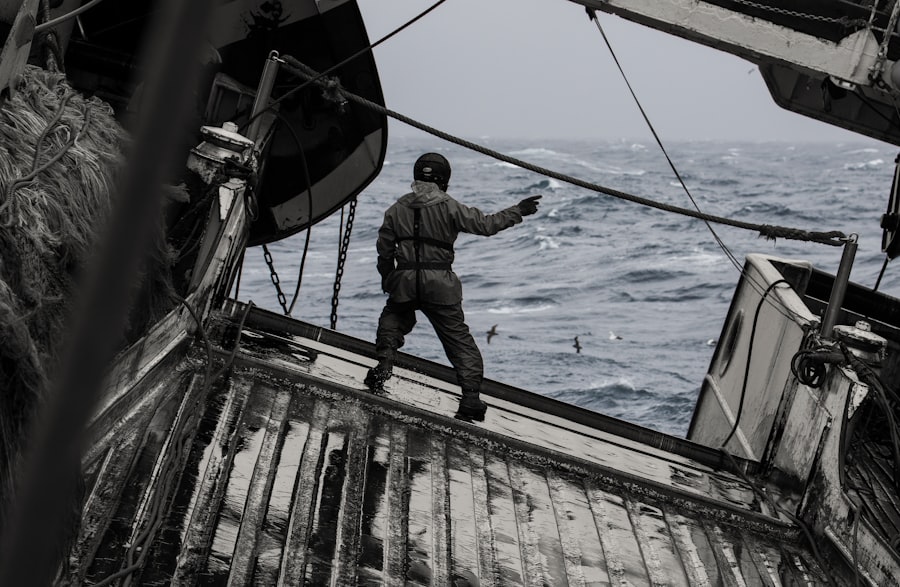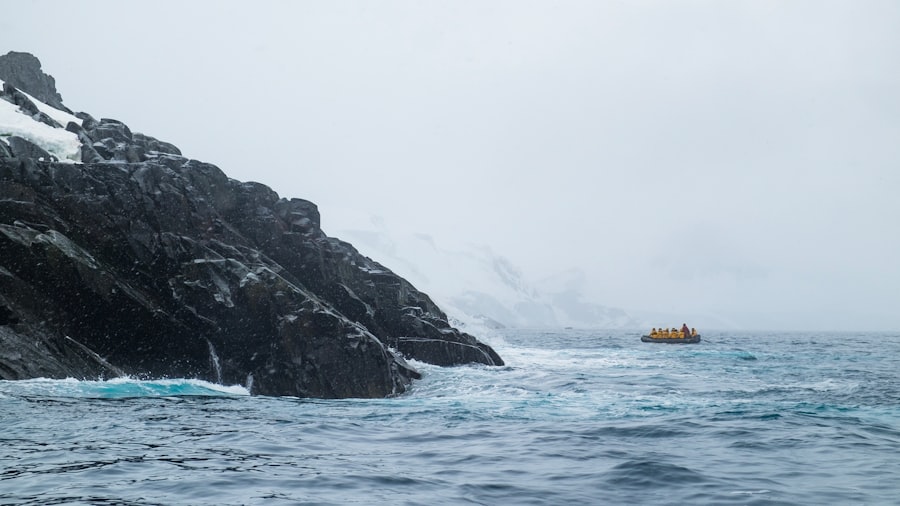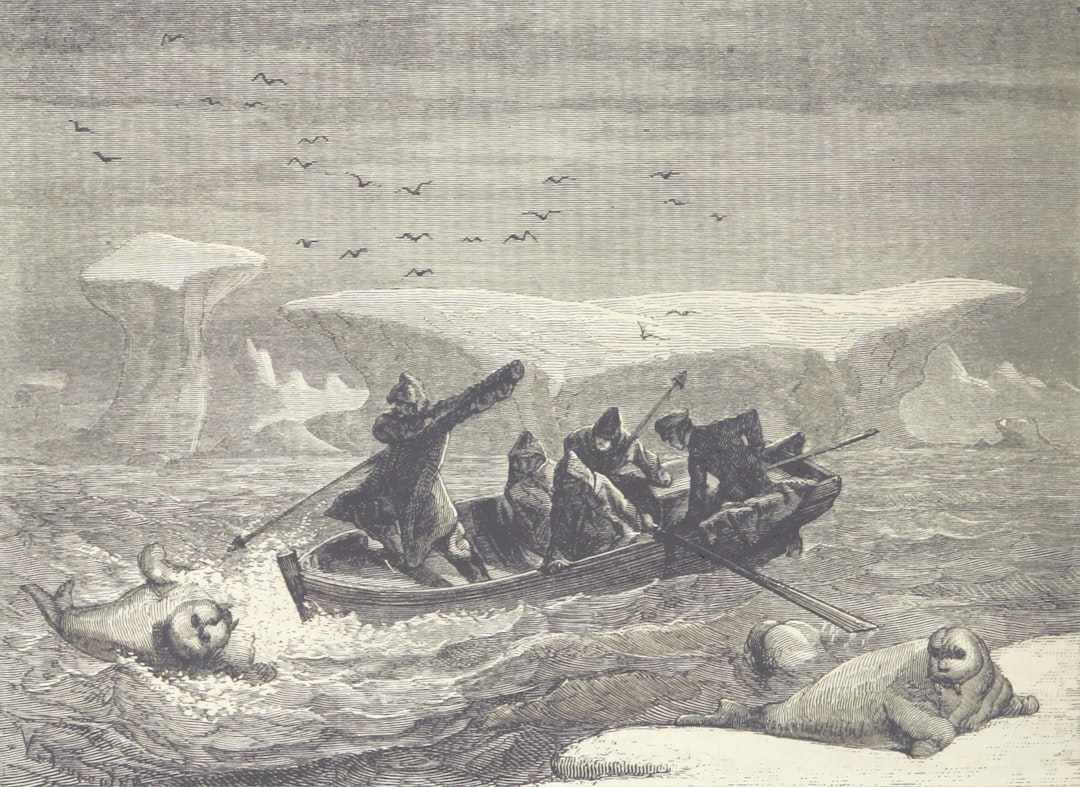The Drake Passage, a body of water that separates South America from Antarctica, is renowned for its tumultuous seas and unpredictable weather.
Stretching approximately 600 kilometers (370 miles) at its widest point, it serves as a critical route for vessels traveling between the Atlantic and Pacific Oceans.
The Drake Passage is not merely a geographical feature; it embodies the spirit of exploration and the challenges that come with venturing into some of the most remote regions of the planet. Navigating the Drake Passage is often considered a rite of passage for those seeking to explore Antarctica. The waters are notorious for their rough conditions, which can change rapidly, making it both a daunting and exhilarating experience.
For many, crossing the Drake Passage is an essential part of their journey to the southernmost continent, where they can witness breathtaking landscapes and unique wildlife. However, this journey is not without its risks, and understanding the intricacies of the passage is vital for anyone planning to traverse these waters.
Key Takeaways
- The Drake Passage is a body of water between South America’s Cape Horn and the South Shetland Islands of Antarctica.
- The geography and climate of the Drake Passage are characterized by strong winds, rough seas, and unpredictable weather patterns.
- The Drake Passage has a rich historical significance as a challenging route for explorers and early navigators.
- Navigating the Drake Passage presents challenges and hazards such as icebergs, strong currents, and extreme weather conditions.
- Safe navigation through the Drake Passage requires proper planning, preparation, and the use of advanced technology and equipment.
Understanding the Geography and Climate of the Drake Passage
The geography of the Drake Passage is characterized by its deep waters and strong currents, which are influenced by the confluence of the Atlantic, Pacific, and Southern Oceans. The passage is home to the Antarctic Circumpolar Current, the world’s largest ocean current, which flows from west to east around Antarctica. This current plays a significant role in regulating global climate patterns and marine ecosystems.
The depth of the passage varies considerably, with some areas plunging to over 4,000 meters (13,123 feet), creating a unique underwater landscape that supports diverse marine life. The climate in the Drake Passage is equally dynamic, marked by extreme weather conditions that can shift from calm to stormy within hours.
Temperatures can also fluctuate dramatically, with icy waters that can chill even the most seasoned sailors. Understanding these climatic factors is crucial for anyone attempting to navigate the passage, as they can significantly impact safety and comfort on board.
Historical Significance of the Drake Passage

The historical significance of the Drake Passage cannot be overstated. It has long been a critical route for explorers and traders seeking to connect the Atlantic and Pacific Oceans. Sir Francis Drake’s expedition in 1578 marked one of the first recorded crossings of this treacherous waterway, paving the way for future explorers.
His journey not only contributed to the mapping of uncharted territories but also highlighted the potential for maritime trade routes that would later become vital for global commerce. In addition to its role in exploration, the Drake Passage has been a site of significant scientific research. The waters have been studied extensively for their unique marine ecosystems and their impact on global climate patterns.
Researchers have utilized this passage as a natural laboratory to understand ocean currents, weather systems, and biodiversity in extreme environments. The historical context of the Drake Passage serves as a reminder of humanity’s enduring quest for knowledge and understanding of our planet’s most remote regions.
Challenges and Hazards of Navigating the Drake Passage
| Challenges and Hazards of Navigating the Drake Passage |
|---|
| Strong winds |
| High waves |
| Rapidly changing weather |
| Narrow passage |
| Potential icebergs |
| Seasickness |
Navigating the Drake Passage presents numerous challenges and hazards that can test even the most experienced mariners. The unpredictable weather patterns are perhaps the most daunting aspect, with storms capable of developing rapidly and creating treacherous conditions. High winds can generate waves that reach heights of up to 15 meters (49 feet), making navigation perilous.
These conditions can lead to vessel instability and pose significant risks to crew and passengers alike. In addition to weather-related challenges, navigators must also contend with icebergs and floating debris that can pose hazards to vessels traversing these waters. The presence of icebergs is particularly concerning during certain times of the year when they drift northward from Antarctica.
Mariners must remain vigilant and employ advanced navigation techniques to avoid collisions with these massive ice formations. The combination of severe weather and potential obstacles makes navigating the Drake Passage a formidable undertaking.
Strategies for Safe Navigation through the Drake Passage
To ensure safe navigation through the Drake Passage, mariners must adopt a range of strategies that prioritize safety and preparedness. One essential approach is thorough route planning, which involves studying weather forecasts, ocean currents, and potential hazards before embarking on a journey. Utilizing advanced navigation tools such as GPS and radar can enhance situational awareness and help crews make informed decisions while at sea.
Another critical strategy is maintaining open communication with other vessels in the area. Sharing information about weather conditions and potential hazards can foster a collaborative environment among mariners navigating these challenging waters. Additionally, having contingency plans in place for emergencies is vital.
This includes ensuring that all crew members are trained in emergency protocols and that safety equipment is readily accessible on board.
Importance of Proper Planning and Preparation

Proper planning and preparation are paramount when it comes to navigating the Drake Passage successfully. Mariners must conduct comprehensive research on the passage’s unique characteristics, including its weather patterns, currents, and potential hazards. This knowledge allows crews to anticipate challenges and make informed decisions throughout their journey.
Moreover, ensuring that vessels are equipped with appropriate safety gear is essential for mitigating risks associated with navigating these waters. Life jackets, emergency beacons, first aid kits, and communication devices should all be readily available on board. Additionally, conducting regular safety drills can help crew members become familiar with emergency procedures, ensuring that everyone knows their roles in case of an unexpected situation.
Technology and Equipment for Navigating the Drake Passage
Advancements in technology have significantly improved navigation through the Drake Passage over recent years. Modern vessels are equipped with sophisticated navigation systems that utilize GPS technology to provide real-time positioning data. This allows mariners to track their location accurately and make necessary adjustments to their course based on changing conditions.
In addition to navigation systems, weather forecasting technology has also evolved dramatically. Access to accurate and timely weather information enables crews to make informed decisions about when to set sail or alter their course in response to adverse conditions. Furthermore, advancements in vessel design have led to more robust ships capable of withstanding rough seas, enhancing safety for those navigating this challenging passage.
Wildlife and Natural Wonders of the Drake Passage
The Drake Passage is not only known for its challenging navigation but also for its rich biodiversity and stunning natural wonders. The waters are teeming with marine life, including various species of whales, seals, and seabirds that thrive in this unique ecosystem. The presence of krill—tiny crustaceans that serve as a primary food source for many marine animals—contributes to the area’s ecological significance.
For wildlife enthusiasts and researchers alike, the Drake Passage offers unparalleled opportunities for observation and study. Sightings of humpback whales breaching the surface or penguins waddling along ice floes create unforgettable experiences for those fortunate enough to traverse these waters. The natural beauty of the surrounding landscapes further enhances the allure of this region, making it a destination for adventurers seeking both challenge and wonder.
Tips for Dealing with Seasickness and Motion Sickness
Seasickness is a common concern for those embarking on a journey through the Drake Passage due to its notorious rough waters. To mitigate discomfort associated with motion sickness, individuals can take several proactive measures before and during their voyage. One effective strategy is to choose accommodations on lower decks where motion is less pronounced compared to higher levels of a vessel.
Additionally, staying hydrated and consuming light meals can help alleviate symptoms associated with seasickness. Many travelers find relief through over-the-counter medications or natural remedies such as ginger or acupressure wristbands designed to reduce nausea. Engaging in activities that distract from feelings of discomfort—such as reading or socializing—can also be beneficial during rough patches at sea.
Emergency Protocols and Safety Measures
Given the unpredictable nature of the Drake Passage, having well-defined emergency protocols in place is crucial for ensuring passenger safety during voyages. Crew members should be trained in emergency response procedures that cover various scenarios such as man overboard situations or medical emergencies onboard. Regular safety drills should be conducted to familiarize crew members with evacuation routes and procedures for using safety equipment like life rafts or flares.
Additionally, maintaining clear communication channels among crew members ensures that everyone is aware of their responsibilities during emergencies. By prioritizing safety measures and preparedness training, vessels can enhance their resilience against potential challenges encountered while navigating this formidable passage.
The Future of Navigating the Drake Passage
As interest in Antarctic exploration continues to grow, so too does the need for sustainable practices in navigating the Drake Passage. Environmental concerns regarding climate change and its impact on marine ecosystems have prompted discussions about responsible tourism and conservation efforts in this fragile region. Future navigators will need to balance adventure with environmental stewardship to protect the unique biodiversity found within these waters.
Technological advancements will likely play a pivotal role in shaping the future of navigation through the Drake Passage as well. Innovations in vessel design aimed at reducing fuel consumption and minimizing environmental impact will become increasingly important as awareness about climate change grows. By embracing sustainable practices while continuing to explore this remarkable waterway, future generations can ensure that they preserve both its natural beauty and historical significance for years to come.
The Drake Passage is notorious for its treacherous conditions, making it one of the most dangerous sea routes in the world. This narrow body of water between the southern tip of South America and Antarctica is infamous for its unpredictable weather, strong currents, and massive waves, which can reach heights of up to 40 feet. These factors combine to create a challenging environment for even the most experienced sailors. For more insights into the geographical and environmental factors that contribute to the perilous nature of the Drake Passage, you can explore a related article on MyGeoQuest. This resource delves into the unique characteristics of the passage and offers a deeper understanding of why it poses such a significant challenge to navigation.
WATCH NOW! Drake Passage: Earth’s Deadliest Waters Revealed
FAQs
What is Drake Passage?
Drake Passage is the body of water between the southern tip of South America and the northern tip of the Antarctic Peninsula. It connects the Atlantic and Pacific Oceans.
What makes Drake Passage dangerous?
Drake Passage is known for its rough seas, strong winds, and unpredictable weather conditions. The convergence of the Atlantic, Pacific, and Southern Oceans creates a turbulent and challenging environment for ships and vessels.
Are there specific weather patterns that contribute to the danger of Drake Passage?
Yes, the passage is notorious for its strong westerly winds, which can reach hurricane force, and the potential for rapidly changing weather conditions. These factors can lead to rough seas and large waves, making navigation difficult and hazardous.
Are there any other factors that contribute to the danger of Drake Passage?
In addition to the challenging weather conditions, the presence of icebergs and ice floes in the area further adds to the danger of navigating Drake Passage. These ice hazards can pose a significant risk to ships and vessels passing through the area.
Are there any safety measures in place for ships and vessels navigating Drake Passage?
Ships and vessels crossing Drake Passage often take precautions such as having experienced crew members, using advanced navigational equipment, and closely monitoring weather forecasts. Some ships may also have ice-strengthened hulls to better withstand the conditions in the passage.
